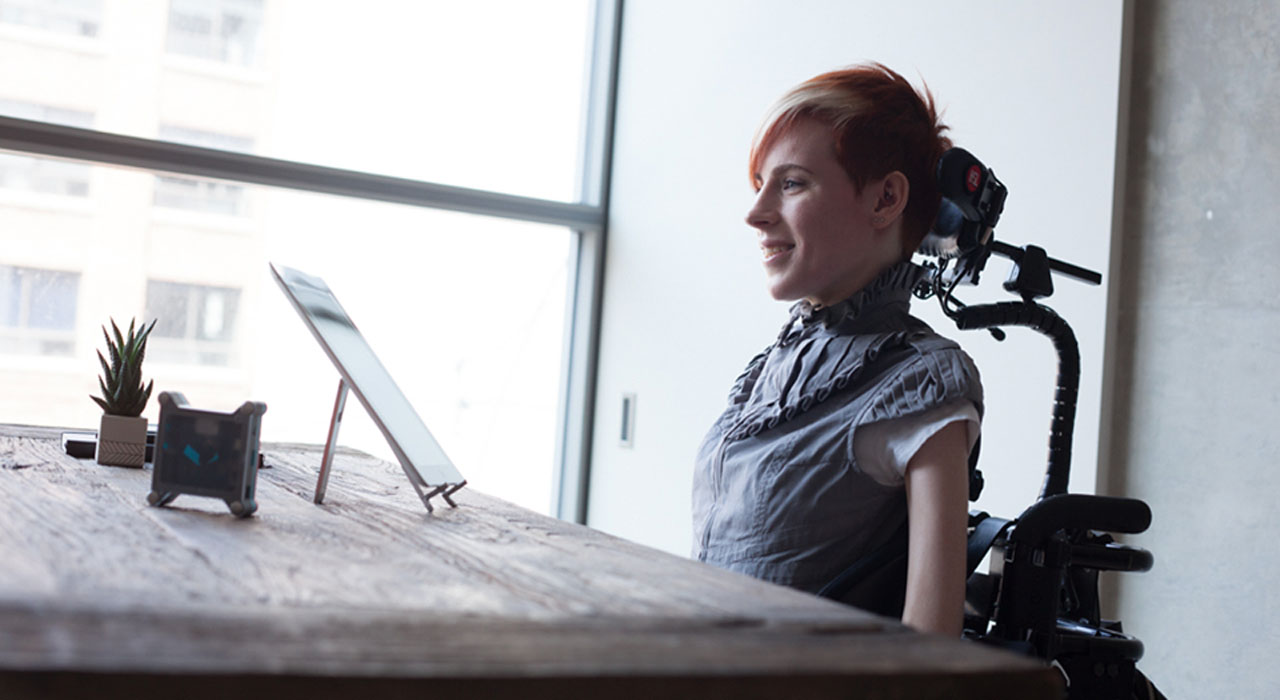Blog Articles
Wednesday, May 25th, 2016
 |
| Source: Springwise |
Neurodegenerative diseases (NGDs), such as Alzheimer's and Parkinson's, are particularly difficult diagnoses to receive, for both patients and caregivers. With no known cure, treatment becomes a series of management techniques, and the various ataxias and dementias associated with NGDs can become all-consuming and increasingly debilitating over time.
While these diagnoses are certainly life-altering, there are numerous projects underway to improve both quality of life for patients and peace of mind for caregivers. In many instances, these projects would not exist without the advances in technology and data acquisition that have taken place in recent years.
Managing Physical Symptoms
There are various apps for monitoring ataxias, or difficulties with movement. Muscle tremors and twitches, as well as the typical "seizing up" of muscles that accompanies Parkinson's Disease can be regulated through devices like the GyroGlove (currently being prototyped), which reduces tremoring in the hands[1]. A product with a similar goal, Liftware, adapts to the shaking of hands, allowing for easier use of utensils.
Some apps, such as Verbally, also aim to help the speech impaired. The Parkinson’s Voice Initiative is an ongoing research project that captures and quantifies changes in speech patterns and has been shown to accurately diagnose Parkinson’s disease in participants[2].
Granting Peace of Mind
Dementia is a common symptom associated with some NGDs, particularly Alzheimer's. As it can be a constant source of worry for caregivers, health informatics is seeking to provide ways to keep patients safe when they become lost or confused.
Wearable trackers, such as those used by Project Lifesaver, allow for caregivers to track the movements of their loved one and even send a notice to the agency to initiate a search if he or she goes missing, reducing search times by 95%[3].
Reclaiming Independence
For patients who have suffered severe loss of movement, or even paralysis, technology can allow greater freedom and control.
A number of these assistive technologies exist for amyotrophic lateral sclerosis (ALS) patients. One that may be available to patients soon is a wheelchair that moves in response to facial expressions[4]. Watch a video of the wheelchair in action. Another tool that is currently available, Tecla, enables users to blink, blow or use other alternative inputs to control their smartphone or tablet.
Brain-controlled prostheses and implants--technology controlled by thoughts--are improving every year. Stanford’s brain-controlled keyboard developed in 2015 has been shown to be about as easy to use and as effective as one-fingered typing[5].
Informatics and the Future of NGDs
While patients and caregivers are finding new ways to navigate difficult diagnoses, researchers are gaining a better understanding of the underlying causes of NGDs, while also mitigating many of its symptoms and improving quality of life for patients and caretakers.
Through the use of EHR databases, informaticians are finally able to gather data and compare similar cases[6]. Their findings are vital to the continued study and understanding of NGDs. Additionally, new technology is also aiding in the battle against NGDs; just recently a new scan helped scientists identify a stronger biomarker for Alzheimer's[7].
Together, these efforts offer hope for the early detection of such diseases, disease management and, eventually, the development of a cure.
[1] http://www.medicaldaily.com/gyroglove-helps-ease-hand-tremors-patients-parkinsons-disease-369644
[2] http://www.parkinsonsvoice.org/
[3] http://www.projectlifesaver.org/
[4] http://alsassistivetechnology.blogspot.com/2016/05/wheelchair-controlled-by-facial.html
[5] https://news.stanford.edu/2015/07/31/brain-control-prosthesis-073115/
[6] https://www.healthit.gov/resource/interoperability-review-standards-and-patient-alzheimers-disease-example
[7] http://ww2.kqed.org/futureofyou/2016/05/12/new-scans-point-to-better-biomarker-for-alzheimers-decline/